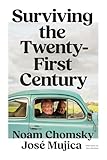For once the ticker tape was not exaggerating.
Panicked traders scrambling to dump everything at once bellowed like a herd of wounded beasts. On the floor of the exchange Post Two descended into outright madness as General Oliver Bridgeman’s plummeting U.S. Steel stock flushed the entire economy away. Crouched down to scribble frantically on a pad of paper, Bridgeman leaped up shouting over the din in a vain attempt to stop the hemorrhaging prices.
At Post Four — Anaconda, Caterpillar Tractor, Southern Pacific, U.S. Pipe and Foundry, General Motors — a sweaty trader went insane, shrieking hysterical orders until friends took him by the arm and led him away.
Leading industrials dropped forty points and the Dow Jones Industrial Average plummeted a record 13% in a single day. With ruined investors committing suicide, a reporter announced that brokers were working “like shell shocked soldiers,” sweat pouring down their faces, their collars and shirts torn to shreds.
Outside the exchange, a hint of violence charged the air as a silent crowd stood on the steps of Federal Hall, hands in pockets, hats pulled low, eyes fixed grimly ahead. A strange noise arose from the streets — first a murmur, then a hum, finally a roar of stunned disbelief.
At the House of Morgan Thomas Lamont dangled his prince-nez and addressed a mob of reporters: “There has been a little distress selling on the Stock Exchange . . .” Representatives of thirty-five of the largest wire houses on Wall Street issued a joint statement claiming that the market was “fundamentally sound” and that “the worst has passed.”
So occurred the Great Crash of 1929. The reason was a growing disequilibrium between capitalism’s immense productive capacity and its aggregate purchasing power. In the twenties low wages and high profits caused industrial productivity to outstrip consumer purchasing power. By the end of the decade a microscopic minority of investors possessed far more wealth than it could productively spend or invest while 70% of non-farm families lacked sufficient income with which to sustain an adequate diet. Six million families, 42% of the total, earned less than $1,000 a year and could not make the profit system respond to their unmet needs.
Soaring productivity exacerbated the problem as mechanization, increasing sophistication of industrial processing, and greater specialization of the labor force produced more for less and concentrated wealth in ever fewer hands. Foreign investment, installment credit, and stock speculation postponed the day of reckoning for a short time, but when hugely inflated stock prices and proliferating numbers of stocks spooked buyers in October 1929, the market went into a deep crash.
Amidst the vast economic misery occasioned by the collapse, an increasingly militant working class resistance emerged, ushering in social democratic reforms that had been won decades earlier in more civilized societies. In 1932, the Norris-LaGuardia Act was passed, exempting unions from antitrust prosecution. Three years later the Wagner Act legalized the right to organize, elevating workers from an anonymous mass of productive atoms to a legitimate class whose grievances had to be negotiated. The same year the Social Security Act opened the door to government funded old-age insurance – over the screams of private industry. (Old age pensions had been enacted in Bismarck’s Germany in 1870, in Austria in 1881, Norway in 1894, Finland in 1895, Britain in 1897, and France, Italy, and Denmark in 1898.)
The upsurge of strikes, demonstrations, and factory occupations that made such changes possible alarmed the business community, which worried about revolution and the guillotine just a few years after having declared history over with an assumed permanent victory for the business classes. The National Association of Manufacturers warned in 1938 that “the newly realized political power of the masses” posed unprecedented danger. “Unless their thinking is directed,” it added, “we are definitely headed for adversity.” A corporate counteroffensive quickly developed new methods of strike-breaking, manipulative “human relations” policies in personnel, and enormous propaganda efforts dedicated to smearing union organizers as treasonous “Reds”.
Contrary to much mythologizing, President Roosevelt sought to harness the working class to capitalism, not emancipate it from the exploitative system, and he actually started out more conservatively than Herbert Hoover. He handed government authority to people who wanted to control workers and retain power in the business classes. He was sincere in his efforts to ameliorate the worst symptoms of the profit system, but only in order to stabilize it and prevent stronger measures from being undertaken by angry workers determined to find a permanent cure to the booms, busts, panics, and breakdowns that had plunged millions of workers into untold misery for generations. For example, the Wagner Act was designed to reverse labor’s radical direction and restore passivity and continuous production by institutionalizing the authority of conservative labor leaders over the rank and file. The goal was to direct labor militancy into legalistic procedure and way from sit-down strikes. In general, FDR’s labor laws sought to make labor “responsible” by inducing its leaders to become dependent on state and corporate support that could later be contracted or withdrawn.
Similarly, federal relief was implemented to cool off mass protest, defeat Norman Thomas’s bid for the presidency as the Socialist Party nominee, limit violent upheaval, and banish the threat of revolution. Wherever organized labor was strong, the New Deal offered concessions, but where it was weak it declined to help; and when militant upheaval abated, aid was sharply cut, imposing suffering worse than any since the Crash itself.
Such policies were only to be expected from FDR’s appointees, most of whom were decidedly anti-working class. His first Secretary of State, Cordell Hull, was from the overtly racist and anti-labor wing of the Democratic Party. Jesse Jones, a conservative millionaire newspaper owner, headed the Reconstruction Finance Corporation and later the Commerce Department, and was a great friend of the monopolists. War Secretary Henry Stimson was a Wall Street attorney who negotiated General Somoza into power in Nicaragua. The under-secretary of State was Edward Stettinius, a U.S. Steel millionaire. The Chief of the National Recovery Administration was General Hugh H. Johnson, who went to San Francisco and declared the 1934 general strike there a “menace to the government,” which it certainly was. But he offered no clue why government that ushered in economic collapse shouldn’t be menaced with workers’ control.
New Deal reforms did go well beyond prior legislation, but they never contemplated far-reaching changes in the system that had created the disaster. The Roosevelt Administration’s reforms called not for a realignment of classes, but for industry cooperation in implementing government-directed reforms. As a result, men were paid to rake leaves and build mausoleums, but not to work idle machines producing the means to feed and clothe themselves. Only massive public enterprise could have moved the U.S. fully into the era of social democracy, but the New Deal shunned social planning and rejected government responsibility for full employment, in favor of high joblessness and unemployment insurance. Charity for workers and entitlement for the corporations that held them down continued to be the operative values.
In fact, the New Deal was a boon to private industry. The “code authorities” of the National Recovery Administration were drawn heavily from the ranks of big business. They restricted production and set prices that benefited major corporations at the expense of their smaller rivals,, and primed the production pump by funneling torrents of public cash into the hands of financial elites. In nine years the Reconstruction Finance Insurance Corporation extended big business $15 billion in loans.
The federal housing program awarded subsidies to construction firms and insured the loans of mortgage bankers. Agricultural price supports and production cutbacks aided large producers while displacing tenant farmers and sharecroppers when federal acreage rental programs withdrew lands from cultivation. The Civilian Conservation Corps provided subsistence jobs for just 250,000 of the 15 million people out of work.
The Works Project Administration sporadically employed 9 million people at wages below the norm in private industry. Of twelve million people working for less than 40 cents an hour, only half a million benefited from the minimum wage law – just over 4% of them. The Social Security Act covered but half the population and offered no medical insurance or protection against pre-retirement illness. Welfare programs were funded not by a wealth tax, but by regressive payroll and sales taxes.
Finally, only the massive war orders of the 1940s lifted the economy out of the Depression, so if anyone deserves credit for curing that catastrophe it is Adolf Hitler, not Franklin Roosevelt.
As for the grotesquely lopsided distribution of wealth that precipitated this and every other economic crisis under capitalism, researchers have found that income inequality persisted unchanged through the Hoover, Roosevelt and Truman years.
Sources
Professor Frank Stricker, Causes of the Great Depression, California State University Dominguez Hills course materials 1993
Howard Zinn, A People’s History of the United States (Harper, 1995)
Michael Parenti, Democracy For the Few (St. Martins, 1995)
Daniel R. Fusfeld, The Economic Thought of Franklin D. Roosevelt and the Origins of the New Deal (Columbia, 1954)
I. F. Stone, The War Years, 1939-1945 (Little Brown & Company, 1988)
Noam Chomsky, Deterring Democracy (Hill and Wang, 1991)
Noam Chomsky, Year 501: The Conquest Continues (South End, 1993)
Richard O. Boyer and Herber M. Morais, Labor’s Untold Story (Cameron Associates, 1955)
John Spritzler, The People As Enemy — The Leaders’ Hidden Agenda in World War II (Black Rose, 2003)
Gardner, Lloyd C., Safe For Democracy: The Anglo-American Response to Revolution, 1913-1923 (Oxford, 1984)
Wiesen-Cook, Blance, Eleanor Roosevelt — The Defining Years, 1933-1938 (Penguin, 1999)










